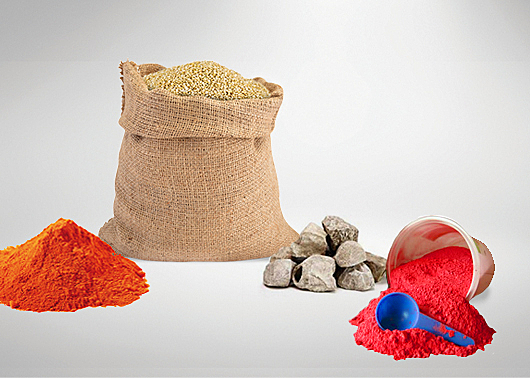
It’s time to get a valve that is a many-trick pony
You’ve got skills, and some really great ideas, but your equipment is turning out to be a one-trick pony that only plays well with certain types of material.
We don’t recommend processing materials such as abrasive aggregate and fine powders in the exact same machinery—they are very different materials and we understand that each industry has its own challenges and regulations.
But buying separate machinery for each different material can get very pricey very quickly, and nobody likes being pigeon-holed when they have so many great things to offer the world.
This is why we recommend a more universal valve with different or adjustable add-on features that can accommodate specific manufacturing environments and industry regulations.
Here’s how to ensure your machinery stays affordable, and as versatile as your product line.
Start with your equipment’s material
Some materials are abrasive, while others can be incredibly corrosive. By choosing a material like stainless steel, and having the valve interally polished (typically to a 180 grit finish) will help with material build-up. It will also prevent cracks & crevices where material can build up inside the valve. Using stainless steel construction also prevents and deters corrosion on your machinery and is great for sanitary applications as it cleans easily.
Though you’re able to use the same equipment material for different applications, maintenance times will change depending on the products you decide to convey. Keep a careful maintenance log so that you can predict when cleaning is needed, or when your rotor needs replacing.
Coatings to weather the material storm
Coatings can be applied to the internal parts of your valve—these would typically be used in cast iron construction valves that convey harsh materials. Coating your valve with hard chrome plating or tungsten coating can increase the life of the valve's operation and help convey sticky or very abrasive materials.
Coatings also prevent material build-up inside your machinery, and make cleaning easy. As a result, you can avoid material drag that leads to cracks and crevices in your equipment. With rotary valves, this also means keeping the rotor-to-housing clearance at a compliant 0.0079" for a longer period of time. This clearance also prevents risks of flame passage due to less build-up of combustible dusts, and risk of creating an ignition source with material drag.
All valves should be compliant
When machinery plays well with any material type, that doesn’t necessarily mean that it’s compliant with NFPA or OSHA.
To stay compliant, make sure your valves have a minimum of eight vanes that are at least three millimeters thick. Two of these vanes should be in contact with each side of the valve housing at all times so that if an explosion or fire happens inside your machinery, the flames can stay contained within the rotor pockets.
Ensure that your rotors have metal tips. Rubber and plastic are not NFPA compliant because they won’t hold up against deflagration.
Your valves should also have outboard bearings so that they are located away from combustible dusts and material build-up. This will also mean that you will have to replace your bearings less frequently.
Keeping machinery clean is key
For industries like food processing and chemical processing, keeping machinery sanitary is integral to staying compliant.
Look for U-shaped rotor pockets in your valves for reduced material build-up, and as a result, reduced cleaning times. Features like our Quick-Clean RotorRail give toolless access to the inside of the housing, making cleaning easier.
Prevent the risks of contamination by choosing features like direct drives, instead of chain drives. Chain drives are not only less powerful, and reduce the adjustability of your valves for conveying different materials, but they are an added risk of contamination because of the lubrication needed to keep them running smoothly.
Your equipment should be accommodating
Different materials require different airflow. Using too much air for certain materials will cause excess damage to your equipment due to the potential for sandblasting materials through your entire system. If there isn’t enough airflow, on the other hand, you could be causing blockages along your line. Meaning, extra clean-ups and higher risk of explosions and fires.
The solution? Size your valves at 70 per cent fill capacity and adjust rotor speed on your direct drive with a variable speed drive (VSD). A VSD allows for speeds to be increased or decreased at the turn of a dial so that your machinery works for multiple material types.
With these tips and tricks, you’re well on your way to working with your machinery to create some new and innovative products.


